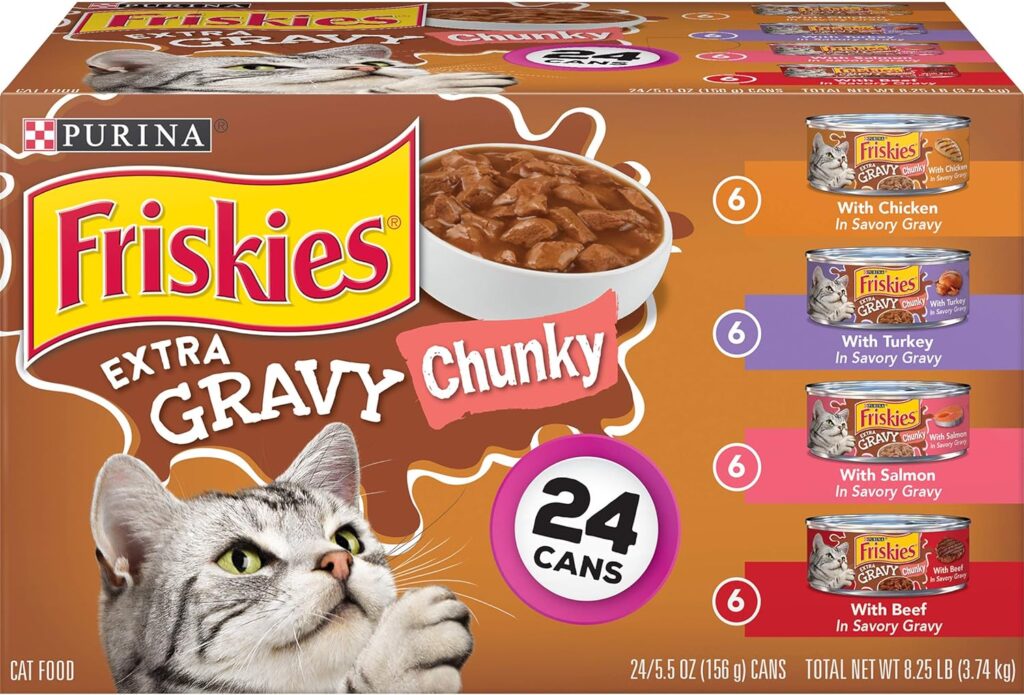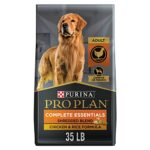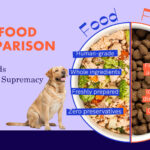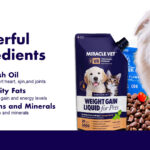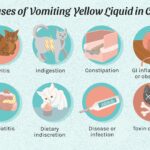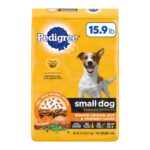How Long Can Wet Cat Food Be Left Out: Safe Limits Unveiled for up to four hours. After this, it should be discarded to avoid spoilage.
Feeding your cat wet food provides essential nutrients and hydration. However, it’s crucial to manage how long the food remains out. Wet cat food spoils quickly due to its high moisture content. Spoiled food can pose health risks to your pet, leading to issues like upset stomachs or food poisoning.
Always monitor the time wet food is left out and clean the feeding area regularly. This practice ensures your cat enjoys fresh, safe meals. Proper handling of wet cat food maintains its nutritional value and keeps your feline friend healthy and happy. By following these guidelines, you can ensure your cat’s diet remains both nutritious and safe.

The Perils Of Improper Food Storage
Improper storage of wet cat food can cause many problems. Wet cat food left out for too long can harm your cat’s health. Understanding these risks can help keep your cat safe and healthy. Let’s explore the dangers of not storing wet cat food properly.
Health Risks For Cats
Leaving wet cat food out can lead to serious health issues. Bacteria can grow quickly, making your cat sick. Cats eating spoiled food may suffer from vomiting, diarrhea, and stomach pain. In severe cases, it can cause food poisoning.
Here are some health risks:
- Vomiting
- Diarrhea
- Stomach pain
- Food poisoning
Bacterial Growth In Wet Food
Wet cat food is a perfect place for bacteria to grow. Moisture and warm temperatures help bacteria spread fast. Harmful bacteria like Salmonella and Listeria can grow in wet food. These bacteria can make your cat very sick.
Key factors for bacterial growth include:
| Factor | Impact |
|---|---|
| Moisture | Helps bacteria thrive |
| Warm temperatures | Speeds up bacterial growth |
| Time | More time, more bacteria |
It’s important to keep wet cat food safe. Store it in the fridge and use it within a few hours. Your cat’s health depends on proper food storage.
Understanding The Basics Of Cat Food Preservation
Preserving wet cat food properly is crucial for your cat’s health. Wet cat food can spoil quickly if not stored correctly. Understanding the basics helps ensure your cat gets fresh, nutritious meals.
The Role Of Preservatives
Preservatives play a vital role in keeping wet cat food safe. They help prolong the shelf life and prevent harmful bacteria growth. There are two main types of preservatives: natural and artificial.
Natural Vs. Artificial Preservation
Natural preservatives often include ingredients like vitamin E and vitamin C. These help keep the food fresh without chemicals. They are generally safer but might have a shorter shelf life.
Artificial preservatives include chemicals like BHA and BHT. These extend the shelf life significantly. But, they may have potential health risks over long-term use.
| Type | Examples | Benefits | Drawbacks |
|---|---|---|---|
| Natural | Vitamin E, Vitamin C | Safer, fewer chemicals | Shorter shelf life |
| Artificial | BHA, BHT | Longer shelf life | Potential health risks |
Choosing the right type of preservation depends on your priorities. If you prefer natural ingredients, be aware of the shorter shelf life. If you opt for artificial preservatives, monitor for any health issues.
Examining Wet Cat Food Composition
Understanding how long you can leave wet cat food out requires examining its composition. Wet cat food has ingredients that spoil quickly. Knowing these ingredients helps keep your cat safe.
Ingredients Vulnerable To Spoilage
Wet cat food contains proteins like chicken, fish, and beef. These proteins spoil fast at room temperature. Preservatives are used to delay spoilage. Yet, they don’t make the food last forever.
Fat in wet cat food can go rancid. Once rancid, it can make your cat sick. Vegetables and grains are also in wet cat food. They can spoil, though slower than proteins and fats.
Moisture Content And Spoilage Rate
Wet cat food has high moisture content. This makes it spoil quicker than dry food. Bacteria grow faster in moist environments.
Leaving wet food out increases bacteria growth. This can lead to food poisoning in cats. The higher the moisture, the faster the spoilage.
| Food Component | Vulnerability to Spoilage |
|---|---|
| Proteins (Chicken, Fish, Beef) | High |
| Fats | High |
| Vegetables | Moderate |
| Grains | Moderate |
Keep an eye on the moisture content. Wet food left out for too long poses risks. Always store wet cat food properly.
Establishing Safe Time Limits
Knowing how long to leave out wet cat food is essential. It ensures your cat’s health and safety. Cats can be picky eaters, and stale food can lead to health issues.
General Guidelines
Follow these general guidelines to keep your cat safe:
- Two Hours: The maximum time wet food should be left out.
- Temperature: Higher temperatures reduce this time. In hot weather, reduce to one hour.
- Refrigerate Unused Food: Store leftovers in the fridge immediately.
Factors Affecting Food Safety
Several factors impact how long wet cat food can be left out:
| Factor | Effect |
|---|---|
| Room Temperature | Higher temperatures speed up bacteria growth. |
| Food Type | Some foods spoil faster than others. |
| Air Exposure | More exposure increases spoilage rate. |
By following these guidelines, you can keep your cat safe and healthy.
Temperature’s Impact On Wet Cat Food
Understanding how temperature affects wet cat food is crucial. Temperature changes can spoil food and harm your cat. Let’s explore how temperature impacts wet cat food.
The Danger Zone
Wet cat food can spoil quickly when left out. The “Danger Zone” for food safety is between 40°F and 140°F. Bacteria grow rapidly in this range. This can cause the food to become unsafe.
Leaving wet cat food in this temperature range for over two hours is risky. It can lead to foodborne illnesses in cats. Always keep an eye on the time and temperature.
Safe Temperature Ranges For Storage
To keep wet cat food safe, proper storage is key. Store unopened cans in a cool, dry place, ideally below 85°F. For opened cans, refrigeration is essential.
Use the table below to understand safe storage practices:
| Storage Method | Temperature | Time |
|---|---|---|
| Room Temperature | Below 85°F | Up to 2 hours |
| Refrigeration | Below 40°F | Up to 5 days |
Refrigerate opened wet cat food immediately. Use it within five days. Always cover opened cans tightly. This keeps the food fresh and prevents contamination.
Recognizing Signs Of Spoiled Cat Food
Recognizing signs of spoiled cat food ensures your pet’s health. Identifying spoiled food quickly prevents illness. Below, we discuss visual clues and olfactory indicators.
Visual Clues
Observe the food’s appearance. Changes indicate spoilage:
- Mold Growth: Look for green or white spots.
- Color Change: Fresh food should not change color.
- Separation: Liquid separating from solid is a bad sign.
- Texture Change: Spoiled food may appear slimy.
Check the packaging too. A bloated can is a red flag.
Olfactory Indicators
Use your nose to detect bad food. Here are key signs:
- Foul Odor: Fresh food should smell normal.
- Sour Smell: A sour scent indicates spoilage.
- Rancid Odor: Rotten food smells bad.
If it smells off, toss it out. Cats rely on smell for food. They will avoid spoiled food.
Feeding Practices To Minimize Risks
Proper feeding practices are essential to keep your cat healthy. Wet cat food, when left out too long, can become a health risk. Follow these tips to ensure your cat’s food stays fresh and safe.
Portion Control
Portion control is key to minimizing waste and keeping food fresh. Serve only what your cat can eat in one sitting. This helps prevent leftover food from spoiling.
Use a measuring cup to ensure the right amount. If you’re unsure, consult your vet.
| Cat Weight | Food Amount |
|---|---|
| Up to 10 lbs | 1/2 – 1 can |
| 10-15 lbs | 1 – 1 1/2 cans |
| 15-20 lbs | 1 1/2 – 2 cans |
Scheduled Feeding Times
Scheduled feeding times help maintain a routine and reduce waste. Feed your cat twice a day. This keeps the food fresh and your cat happy.
- Morning: Serve breakfast between 7-9 AM
- Evening: Serve dinner between 5-7 PM
Set a timer to remind you when to feed your cat.
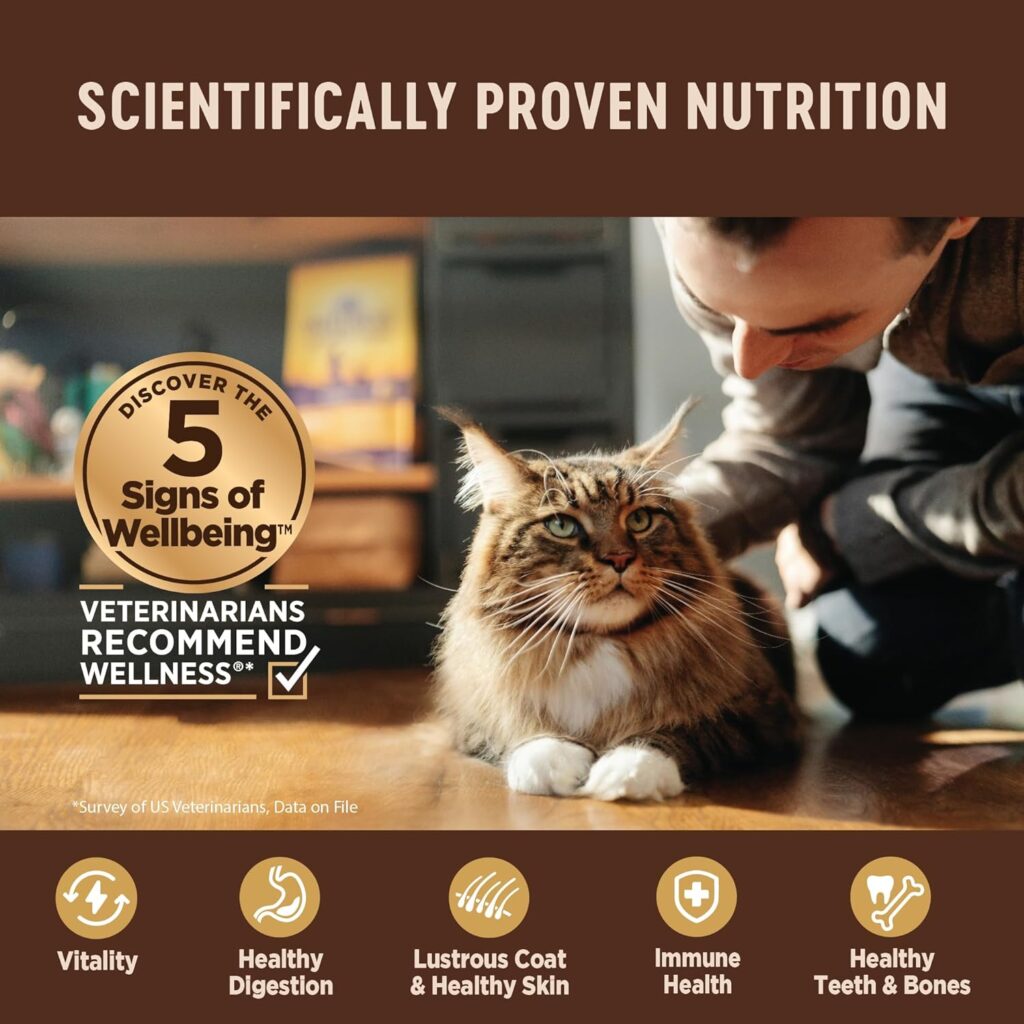
The Debate: Room Temperature Vs Refrigeration
Cat owners often debate how long wet cat food should be left out. Some believe room temperature is best, while others prefer refrigeration. Both methods have their benefits and drawbacks.
Pros And Cons Of Room Temperature
| Pros | Cons |
|---|---|
|
|
The Benefits Of Refrigeration
- Extended Freshness: Keeps food safe longer.
- Reduced Waste: Less food thrown away.
- Health Safety: Limits bacteria growth.
Refrigeration helps maintain the quality of wet cat food. It prevents rapid spoilage and keeps harmful bacteria at bay.
How To Properly Store Wet Cat Food
Proper storage of wet cat food is essential to keep it fresh. Fresh cat food ensures your cat’s health and happiness. Below are some tips to help you store wet cat food correctly.
Sealing And Container Tips
Always keep wet cat food sealed properly. Use the original can lid if possible. If the lid is missing, use plastic wrap or aluminum foil. A tight seal keeps the food fresh and prevents bacteria growth.
Consider using airtight containers for extra freshness. These containers help keep out moisture and air. Choose BPA-free containers to ensure safety. Label each container with the date of opening.
Refrigeration Best Practices
Store opened wet cat food in the fridge. Refrigeration slows bacteria growth. Keep the temperature below 40°F (4°C).
Do not leave wet cat food out for too long. Cats should finish their meal within 2 hours. After that, refrigerate the leftovers immediately.
Use a clean spoon to scoop out the food. This prevents contamination from dirty utensils. Never feed your cat directly from the can. Always transfer the food to a clean dish.
Follow these tips to keep your cat’s food fresh and safe. Proper storage ensures your cat enjoys every meal.

Credit: www.pinterest.com
When To Discard Wet Cat Food
Properly managing wet cat food is essential for your cat’s health. Knowing when to discard it can prevent illness. This section explains the guidelines for discarding wet cat food.
Expiry Dates And Beyond
Every wet cat food has an expiry date. Always check the packaging for this date. Consuming food past this date can be risky for your cat. Manufacturers set these dates for safety reasons. Always stick to the expiry date for your cat’s health.
Additionally, watch for signs of spoilage. Even before the expiry date, food can go bad. Keep an eye out for any changes in color or smell. If the food looks or smells off, discard it immediately.
Assessing Leftovers
Leaving wet cat food out for too long is dangerous. Bacteria can grow quickly on wet cat food. This can lead to foodborne illnesses in cats. It’s best to follow these guidelines:
- Room Temperature: Discard after 1-2 hours.
- Refrigerated: Store for up to 24 hours.
| Condition | Time to Discard |
|---|---|
| Room Temperature | 1-2 hours |
| Refrigerated | 24 hours |
Always use clean dishes for your cat’s food. Wash the bowl after each feeding. This prevents bacteria buildup.
By following these tips, you ensure your cat stays healthy. Always prioritize freshness and cleanliness.
Best Wet Cat Food Brands For Longevity
Choosing the best wet cat food ensures your pet stays healthy. You should also consider how long the food stays fresh. Some brands are better than others for this. Let’s explore the best options for wet cat food longevity.
Shelf-stable Options
Shelf-stable wet cat food can last longer before opening. This type is great for stocking up. Here are some top brands:
| Brand | Features |
|---|---|
| Fancy Feast | Small portions, variety of flavors, quality ingredients |
| Sheba | Easy-to-serve trays, no artificial flavors, high protein |
| Friskies | Affordable, many flavor options, added vitamins |
Brands With Natural Preservatives
Some brands use natural preservatives. These help keep the food fresh longer. Here are some brands known for this:
- Wellness CORE: Uses natural preservatives, rich in proteins
- Blue Buffalo: No artificial additives, natural ingredients
- Merrick: Fresh ingredients, natural oils for preservation
Choosing brands with natural preservatives is healthier for your cat. These brands ensure the food stays fresh longer.
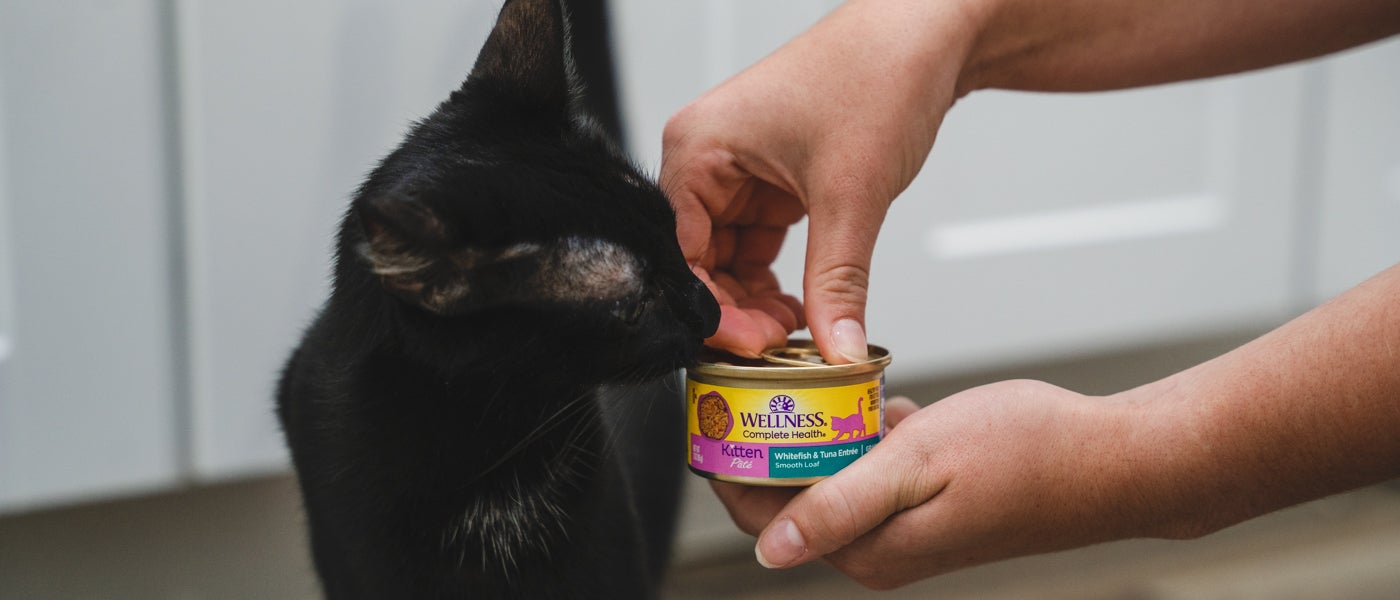
Credit: www.wellnesspetfood.com
The Role Of Cat Owners In Food Safety
Cat owners must ensure their pet’s food is safe. Wet cat food can spoil quickly. Keeping it fresh is vital for your cat’s health. Owners play a big role in this.
Regular Cleaning Of Bowls
Clean bowls keep your cat healthy. Dirty bowls can grow harmful bacteria. This bacteria can make your cat sick. Clean bowls daily to prevent this.
Use warm, soapy water for cleaning. Rinse bowls well to remove all soap. Dry bowls completely before adding food. This prevents bacteria from growing in moisture.
Stainless steel or ceramic bowls are best. They are easier to clean than plastic. Plastic bowls can scratch and hold bacteria. Replace bowls if they get damaged.
Monitoring Cat’s Eating Habits
Observe your cat’s eating habits closely. This helps in knowing how long food can stay out. Some cats eat fast, while others eat slowly.
If your cat eats slowly, divide food into smaller portions. Serve these portions throughout the day. This keeps food fresh and safe.
Remove uneaten food after 2 hours. Wet food spoils quickly at room temperature. Discard old food and clean the bowl.
Keep track of your cat’s meal times. Consistency helps in monitoring food safety. Stick to a feeding schedule to ensure fresh food always.
Innovations In Cat Food Packaging
Wet cat food needs to stay fresh. Innovative packaging helps achieve this. New packaging designs keep food safe and tasty. They also make feeding time easier for cat owners.
Single-serve Pouches
Single-serve pouches are popular. They offer the perfect amount of food for one meal. This reduces waste and keeps food fresh. You don’t need to store leftovers in the fridge.
- Easy to open
- Convenient for travel
- Less mess during feeding
Many brands now use these pouches. They are lightweight and eco-friendly. Cats love the taste, and owners love the convenience.
Smart Packaging Technology
Smart packaging is changing the game. These packages have sensors to monitor freshness. They can alert you if the food goes bad.
| Feature | Benefit |
|---|---|
| Freshness Sensors | Ensures food is safe |
| Resealable Lids | Keeps food fresh longer |
| RFID Tags | Tracks food usage |
These innovations keep your cat healthy. They also make your life easier. You can feel confident knowing your cat’s food is fresh.
The Veterinarian’s Perspective On Food Safety
Wet cat food can spoil quickly if left out too long. Veterinarians offer expert advice to ensure your cat’s food stays safe. Understanding the safety of wet cat food is crucial for your pet’s health.
Expert Recommendations
Veterinarians recommend leaving wet cat food out for no more than two hours. After this period, bacteria can start to grow. This can make the food unsafe for your cat.
To keep wet food fresh, store it in an airtight container. Refrigerate the food if you plan to use it later. Always check the food’s smell and texture before serving it to your cat.
Health Implications Of Stale Food
Feeding your cat stale food can lead to serious health issues. Common problems include vomiting, diarrhea, and stomach aches. Bacteria like Salmonella can grow in spoiled food.
This can cause severe infections in cats. It’s essential to follow these guidelines to keep your cat healthy. Proper food storage and timely feeding are key to preventing these issues.
Creating A Safe And Healthy Feeding Routine
Maintaining a safe and healthy feeding routine for your cat is crucial. Proper meal planning and safety integration are key aspects. This ensures your cat stays happy and healthy.
Meal Planning For Cats
Proper meal planning ensures your cat gets the right nutrients. It also helps in managing feeding times. Follow these steps for effective meal planning:
- Choose high-quality wet cat food.
- Feed your cat at the same times each day.
- Measure the food portions correctly.
- Store unopened cans in a cool, dry place.
Avoid leaving wet cat food out for too long. This prevents bacteria growth and keeps your cat safe.
Integrating Safety Into Daily Routines
Ensure your cat’s feeding area is always clean. This reduces the risk of contamination. Follow these tips:
- Wash your cat’s bowl after each meal.
- Dispose of uneaten wet food promptly.
- Refrigerate any leftover food immediately.
Use a feeding schedule to monitor how long the food stays out. Wet cat food should not be left out for more than 4 hours. This helps in maintaining the food’s freshness and safety.
| Task | Frequency |
|---|---|
| Wash bowls | After each meal |
| Dispose of uneaten food | Immediately |
| Refrigerate leftovers | Within 4 hours |
By following these steps, you create a safe and healthy feeding routine. Your cat will thrive and be happy.
Frequently Asked Questions
How Long Can Cat Wet Food Sit Out?
Cat wet food can sit out for 1-2 hours. After that, bacteria can grow, making it unsafe. Always store leftovers in the fridge.
How Long Does Wet Cat Food Take To Spoil?
Wet cat food spoils within 4 hours at room temperature. Refrigerate opened cans and use within 5-7 days.
Does Wet Cat Food Go Bad?
Yes, wet cat food can go bad. Opened cans should be refrigerated and consumed within 2-3 days. Unopened cans last longer but check expiration dates.
Is It Okay To Leave Cat Food Out All Day?
Yes, it’s okay to leave dry cat food out all day. Wet food should be removed after 4 hours to prevent spoilage.
Conclusion
Leaving wet cat food out for too long can risk your pet’s health. Always follow the recommended guidelines for safety. Dispose of any uneaten food after four hours to prevent spoilage. Proper storage ensures your cat enjoys fresh and nutritious meals. Keep your feline friend healthy by being mindful of food safety practices.

